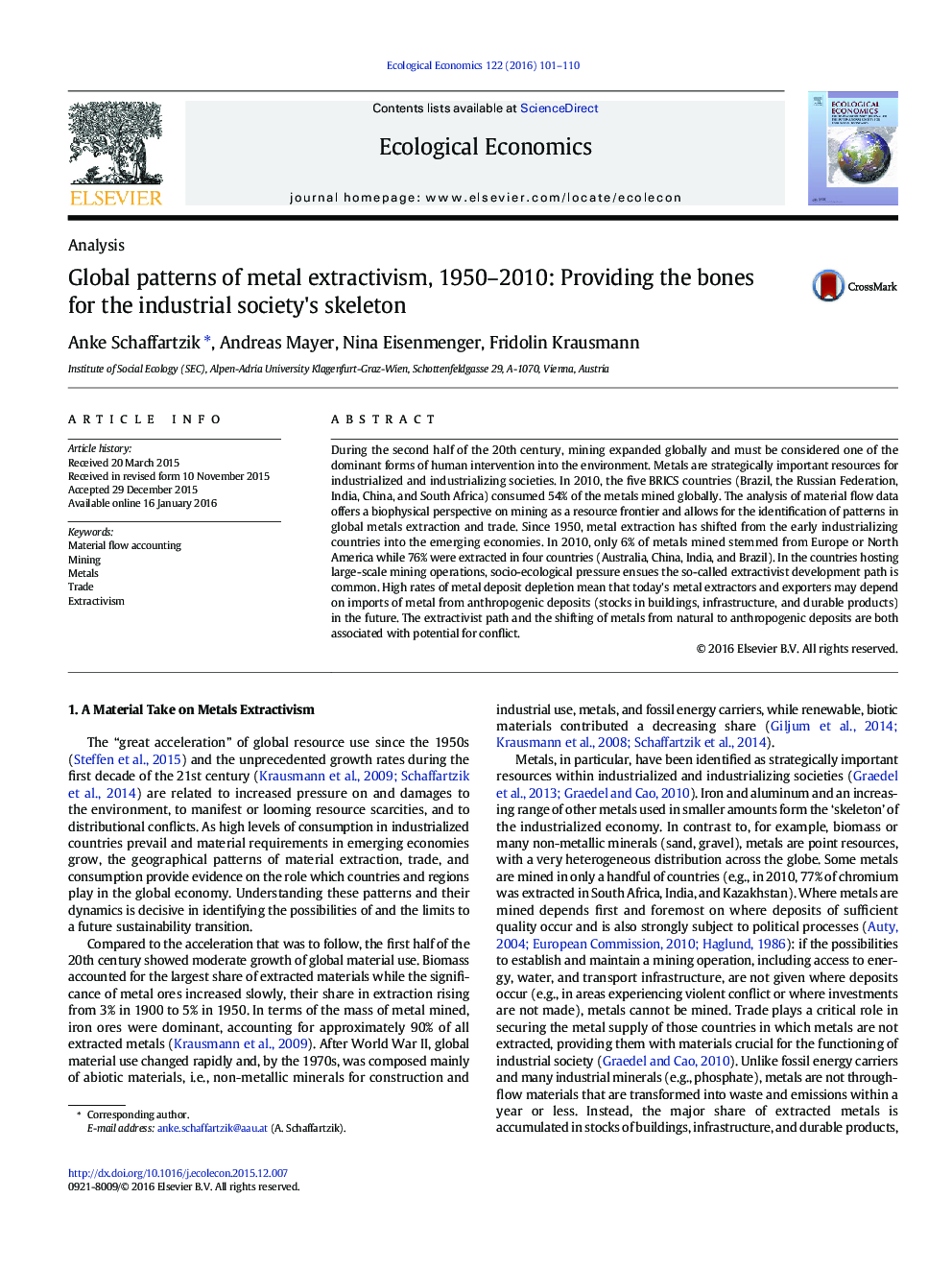| کد مقاله | کد نشریه | سال انتشار | مقاله انگلیسی | نسخه تمام متن |
|---|---|---|---|---|
| 5049135 | 1476357 | 2016 | 10 صفحه PDF | دانلود رایگان |
- Metal extraction and consumption are distributed in an unequal manner.
- Currently, many of the global providers of metals are emerging economies.
- From a material perspective, metals are often mined under an extractivist regime.
- Mining operations have high potential for socio-ecological impact.
- Global patterns in metal extraction and trade are prone to conflict.
During the second half of the 20th century, mining expanded globally and must be considered one of the dominant forms of human intervention into the environment. Metals are strategically important resources for industrialized and industrializing societies. In 2010, the five BRICS countries (Brazil, the Russian Federation, India, China, and South Africa) consumed 54% of the metals mined globally. The analysis of material flow data offers a biophysical perspective on mining as a resource frontier and allows for the identification of patterns in global metals extraction and trade. Since 1950, metal extraction has shifted from the early industrializing countries into the emerging economies. In 2010, only 6% of metals mined stemmed from Europe or North America while 76% were extracted in four countries (Australia, China, India, and Brazil). In the countries hosting large-scale mining operations, socio-ecological pressure ensues the so-called extractivist development path is common. High rates of metal deposit depletion mean that today's metal extractors and exporters may depend on imports of metal from anthropogenic deposits (stocks in buildings, infrastructure, and durable products) in the future. The extractivist path and the shifting of metals from natural to anthropogenic deposits are both associated with potential for conflict.
Journal: Ecological Economics - Volume 122, February 2016, Pages 101-110
